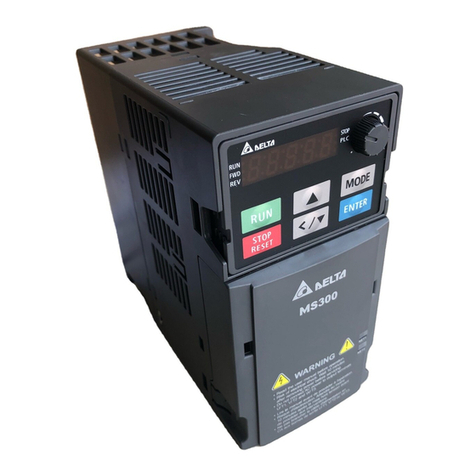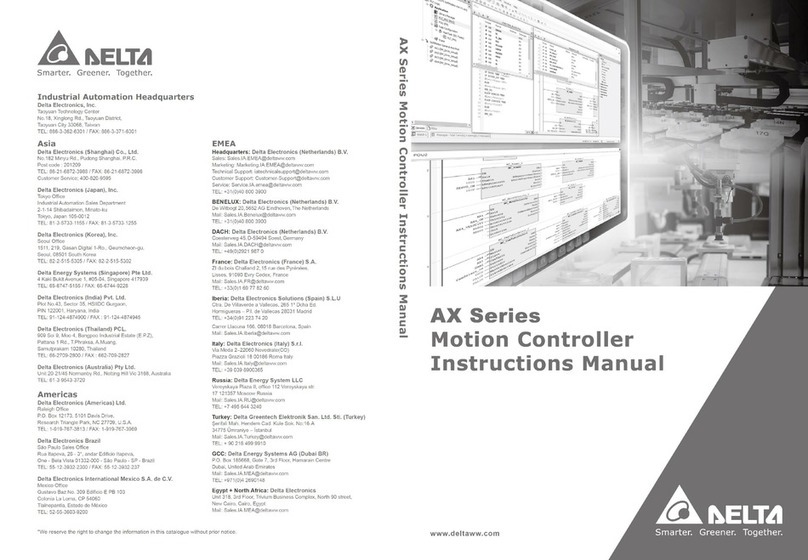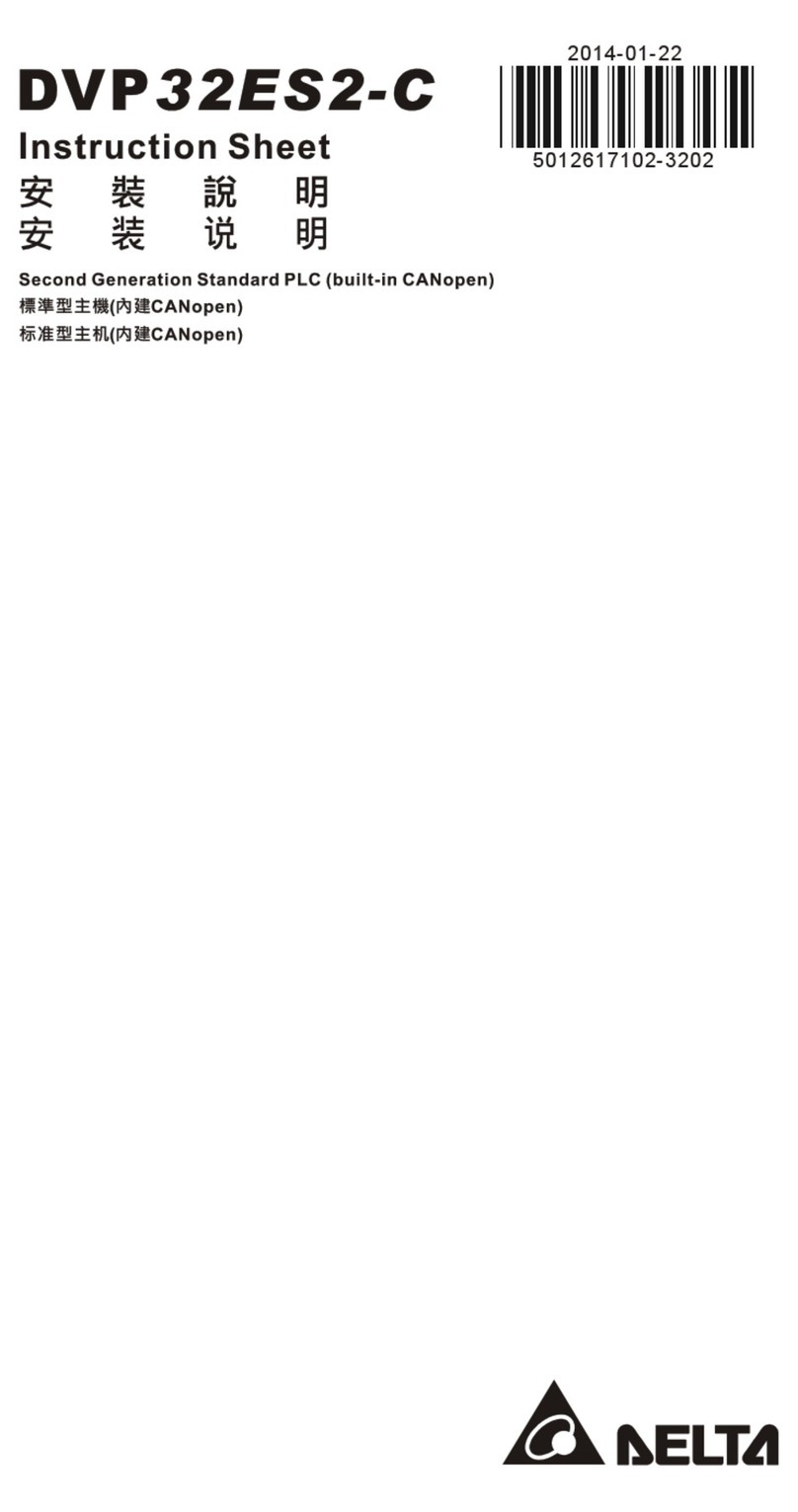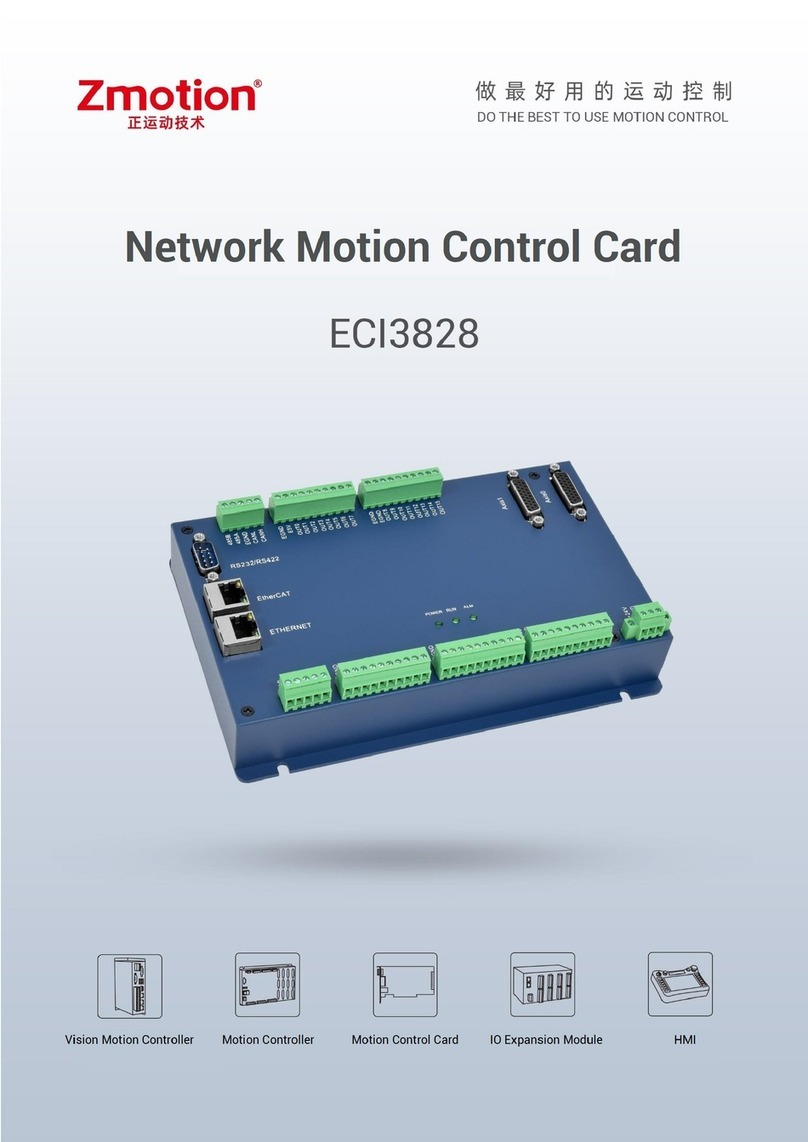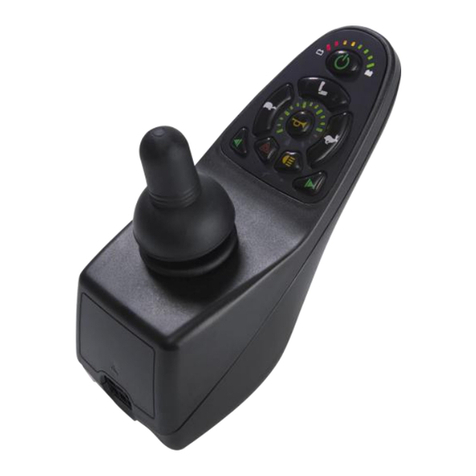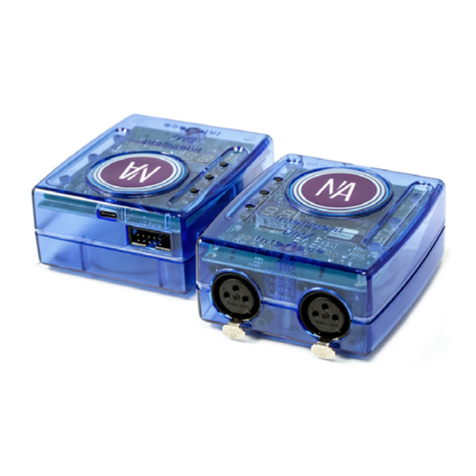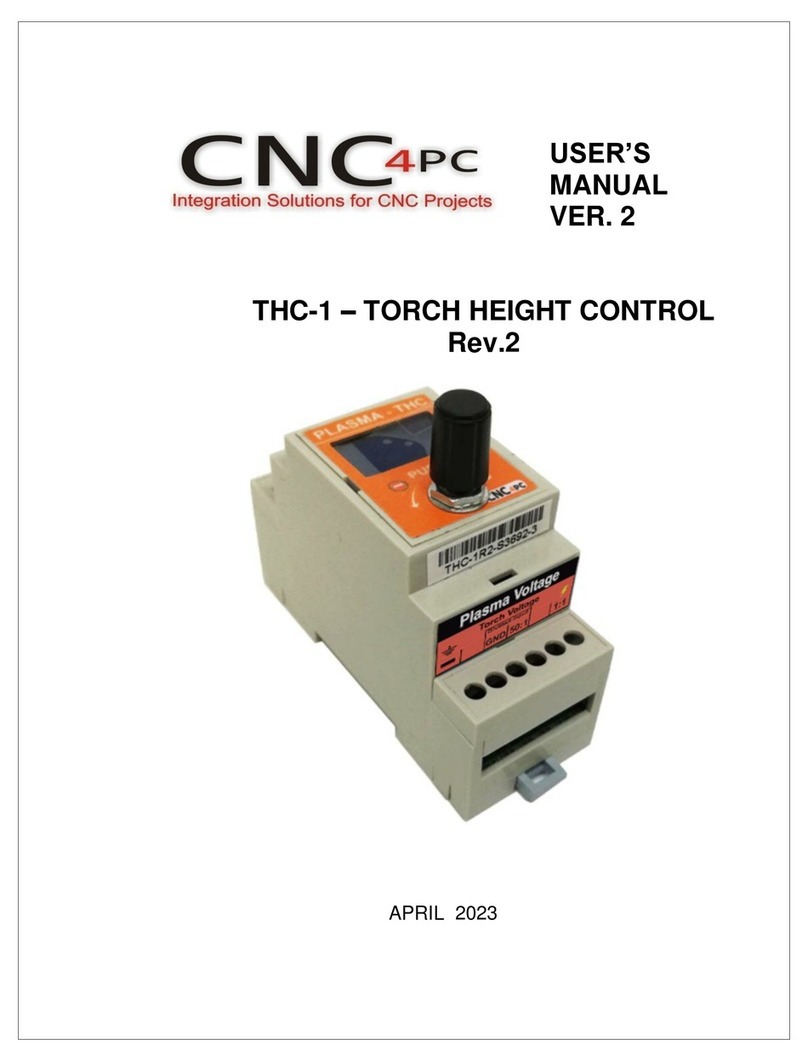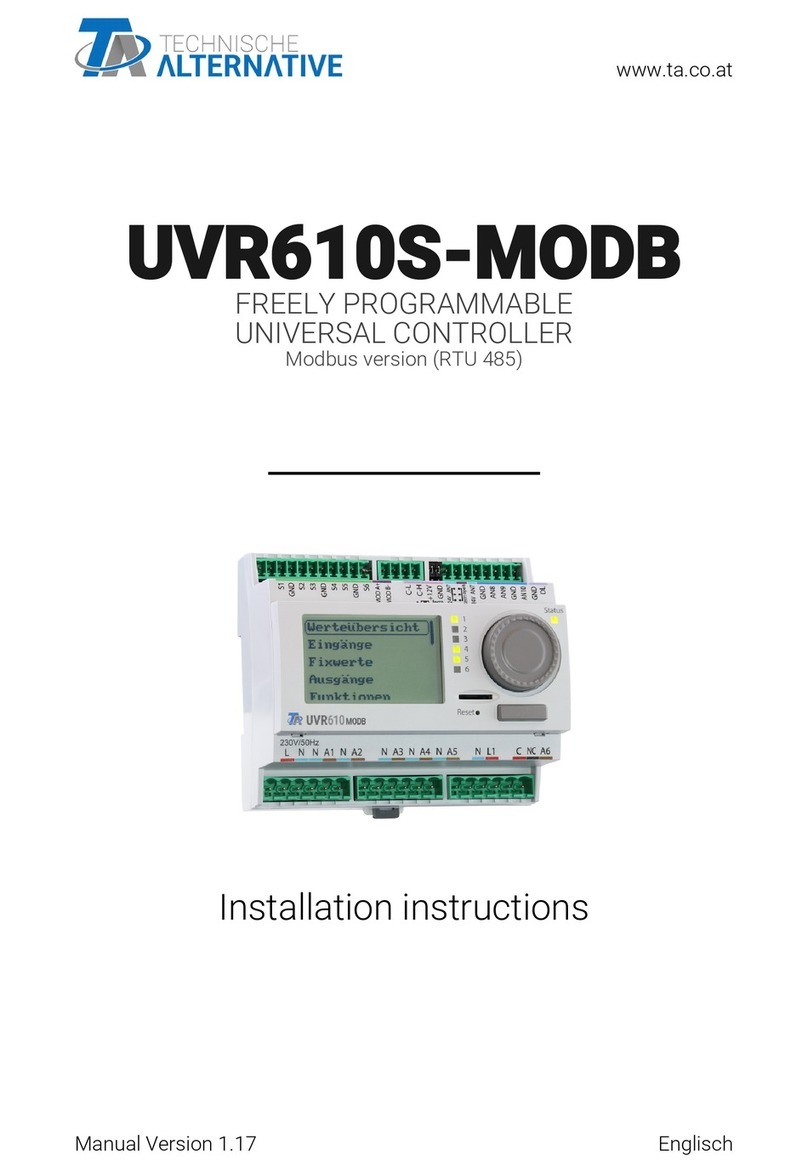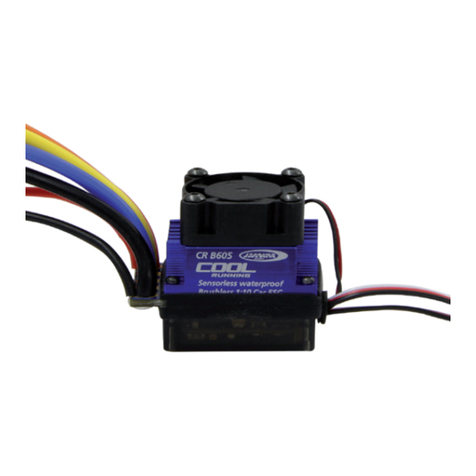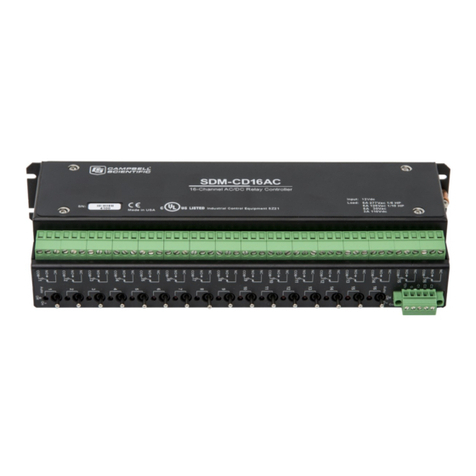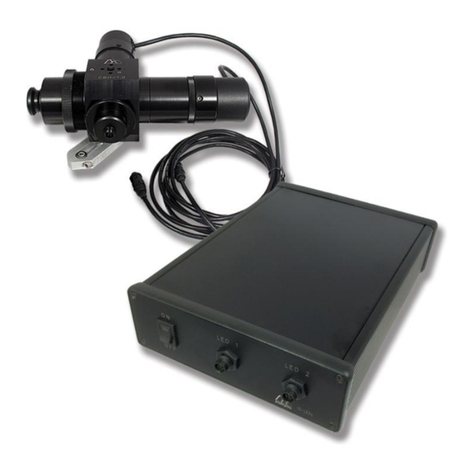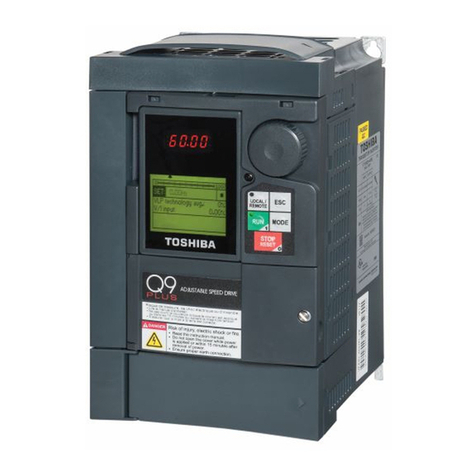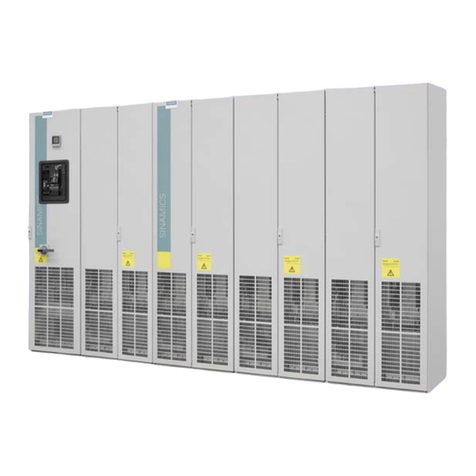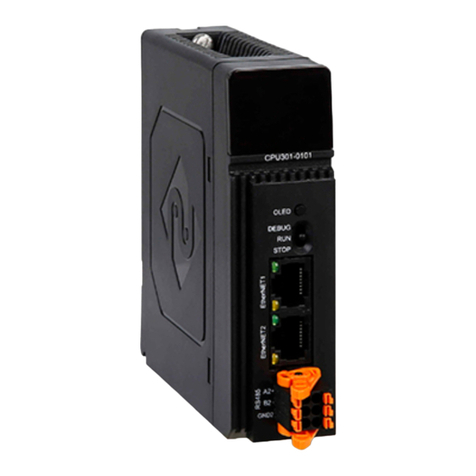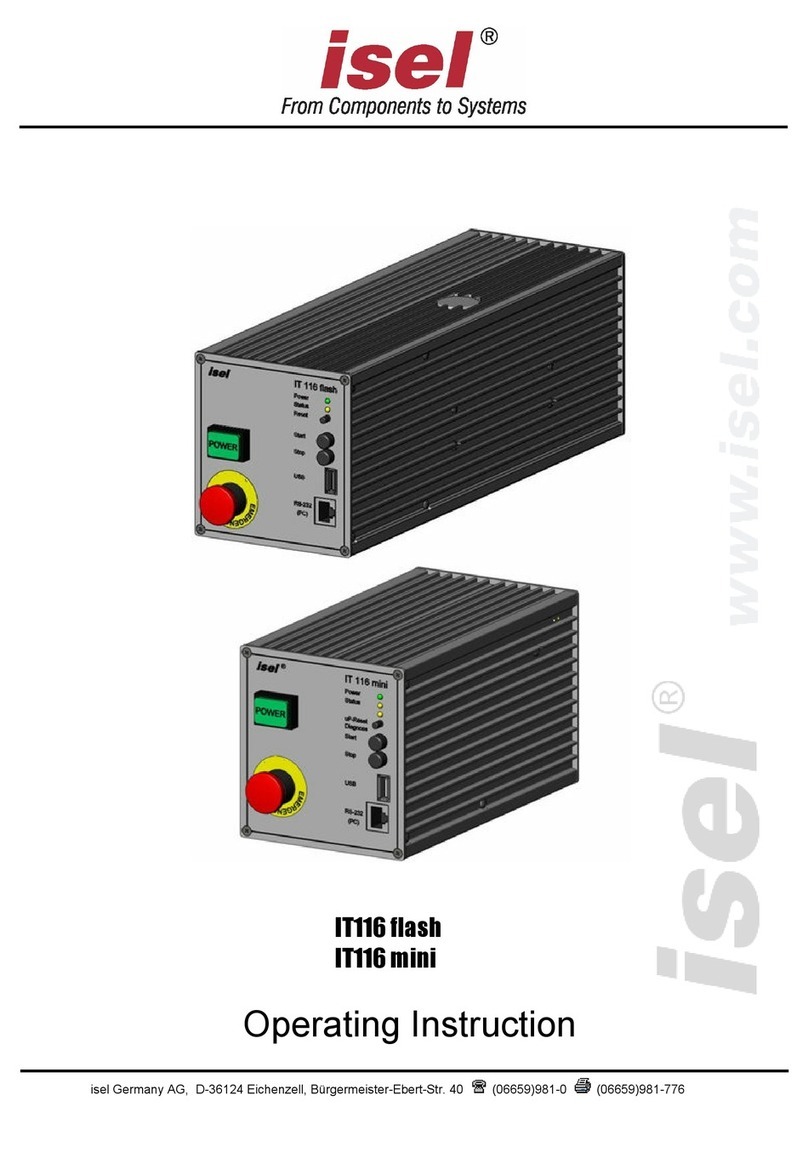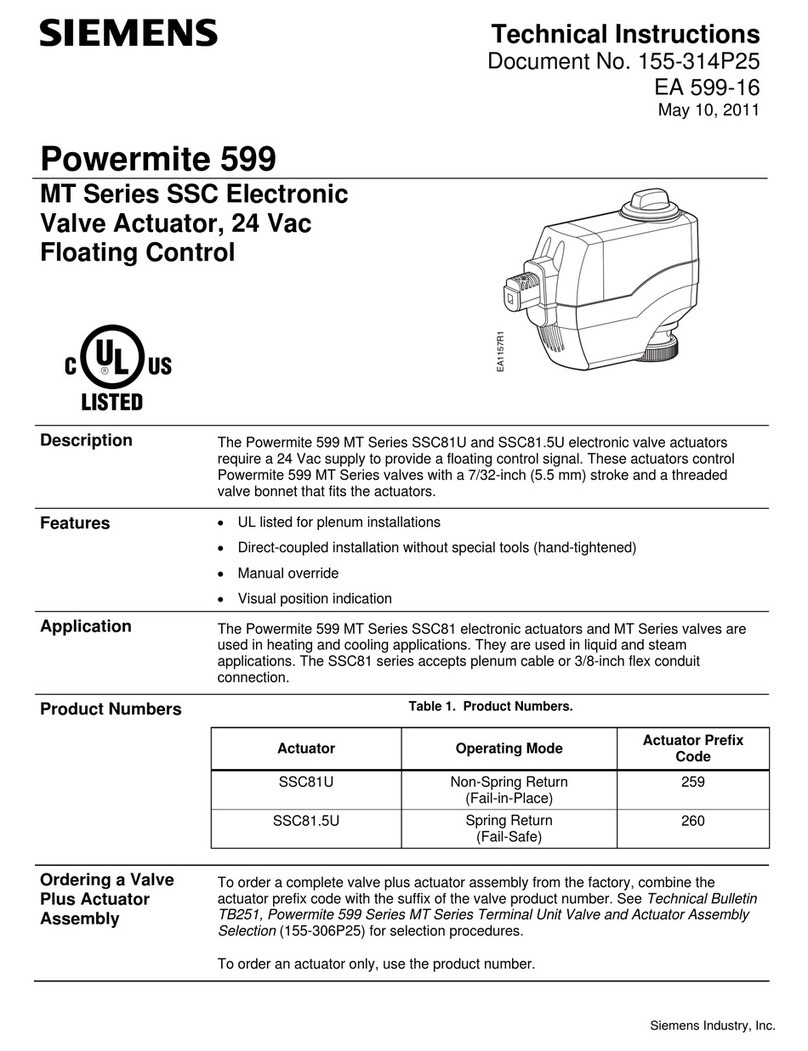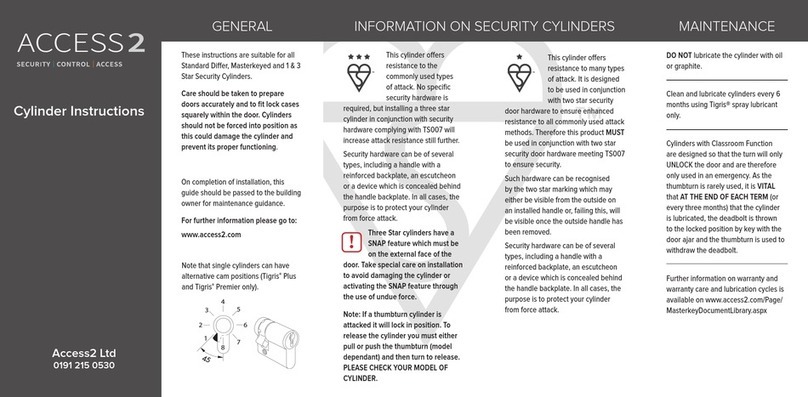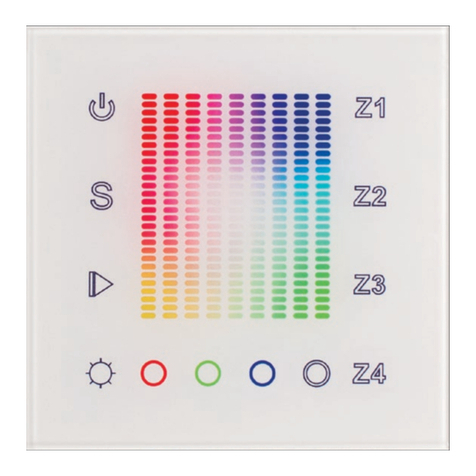Delta E Series Mounting instructions

www.deltaww.com
Recipe Setting Software
Instruction
台達電子工業股份有限公司
33068 㠪⛹ⷩ㠪⛹⌧凯晭巖 18 噆
TEL:886-3-3626301
FAX:886-3-3716301
㜓ὦ䔏㈲ⅱⅎ⮠勌㛰孱㛛Ə〼⏍堳态䟌
E-Series(Non-HMI)

Recipe Setting Software Instruction
1
Content
1. Introduction to servo press...................................................................................................3
1.1 Component.......................................................................................................................3
1.2 Specification ....................................................................................................................4
2. Start .............................................................................................................................................5
2.1 Connect and Initialization.............................................................................................5
2.2 Recipe Setting .................................................................................................................7
2.3 Introduction to Pressing Mode ...................................................................................8
2.3.1 Motionless ............................................................................................................8
2.3.2 Position mode......................................................................................................9
2.3.3 Force mode.........................................................................................................10
2.3.4 Distance mode...................................................................................................11
2.3.5 Force position mode........................................................................................12
2.3.6 Force distance mode .......................................................................................13
2.4 Manual Control ..............................................................................................................14
2.5 Load Cell Calibration ...................................................................................................15
3. External Control .....................................................................................................................18
3.1 I/O and Communications Definitions ......................................................................18
3.2 External Process...........................................................................................................20
3.2.1 External I/O initialization.................................................................................20
3.2.2 External I/O trigger pressing action.............................................................21
3.2.3 External I/O recipe change .............................................................................21
3.2.4 External I/O reset error....................................................................................21
3.2.5 External I/O safety signal interrupt ..............................................................22
4. Communications Data Capture.................................................................................23
4.1 RS-485 connection information ....................................................................23
4.2 Modbus connection information ..................................................................23

Recipe Setting Software Instruction
2
Applicability of Instructions
S Series E Series (with HMI) E Series (no HMI)
Recipe
Setting Delta Servo Press Instruction Manual Recipe Setting Software Instruction
Data
Capture
DIAServoPress Software User’s Manual
Instruction
DIAServoPress Software User’s
Manual Instruction (Does not
support recipe edit function)

Recipe Setting Software Instruction
3
1. Introduction to servo press
1.1 Component
Motor
Cylinder
Cover
Load Cell
Gear Box

Recipe Setting Software Instruction
4
1.2 Specification
E Series
Pressing Control I/O Control、Communication Control
Recipe Amount No HMI: 8 sets
Step Amount 5 steps
Max Moving Velocity 3T, 5T: 200 mm/s
0.1T ~ 1T: 270 mm/s
Frequency 4 kHz
Max Pressing Velocity 40 mm/s
Position Scale 0.001 mm
Force Scale 3T, 5T: 1 kgf
0.1T ~ 1T: 0.1 kgf
Barcode Reader USB
Communication Modbus TCP, RS-485
Default IP 192.168.1.5
Port 502

Recipe Setting Software Instruction
5
2. Start
This software is developed for the servo press without the HMI to make the parameter setting. The
recipe will be saved in the PLC. If user want to operate with the HMI in the future, changing the saving
path to the HMI is required.
2.1 Connect and Initialization
1. After opening the software, it should be connected with the servo press. Please check the IP
address (Default: 192.168.1.5) and touch [Connect].
2. Please check the initialization status. If the servo press hadn’t been initialized, please touch
[Initialization]

Recipe Setting Software Instruction
6
3. Please check the On/Off status, and touch [OFF] when the servo press is [ON]. Only in the OFF
status user can modify the pressing parameter.
4. Please save the recipe in PLC. If user want to operate with the HMI in the future, changing the
saving path to the HMI is required and don’t use this software anymore.

Recipe Setting Software Instruction
7
2.2 Recipe Setting
Please choose the recipe number, the pressing parameters in the recipe will be imported. The
introduction to below parameters is Ch2.3.
If the any parameter was modified, the background of [Write] button will change to the red. Please
touch it to save the setting. If this modified want to be cancelled, please touch [Read] and load the
recipe parameter again.

Recipe Setting Software Instruction
8
2.3 Introduction to Pressing Mode
Pressing conditions include the target value and limit value corresponding to each mode. The maximum
limit value is part of the pressing process to ensure that no damage is done to the work piece due to
excessive pressing. The minimum limit value will be checked after reaching the target condition to
confirm whether this limit range has been reached. The following describes the pressing parameters for
each mode.
2.3.1 Motionless
No pressing parameters set. If this step is reached during the execution of the recipe, the pressing
action will be ended.

Recipe Setting Software Instruction
9
2.3.2 Position mode
Position mode is for clearly defining the end position of the pressing, in which the pressing action is
performed at a constant speed defined by the user during the pressing process.
Pressing conditions: In position mode, the spindle will press down to the [Pressing Position] at the
[Pressing Velocity], and after waiting for the [Pressing Time], execute the next step or return to the
[Working Origin].
Supplementary limiting conditions:
1. These conditions ensure that the force is not greater than the [Max. Force]during the entire
pressing process. If it becomes greater than the [Max. Force], the work piece will be deemed as
NG and the spindle will return to the [Working Origin].
2. If [Dynamic Force Limit] is not turned on, after the spindle reaches the [Pressing Position], the
servo press will check whether the force value is within the range of [Max. Force]and [Mini.
Force]. If it is, the work piece will be deemed as OK; if not, it is deemed as NG.
3. If [Dynamic Force Limit] is turned on, the servo press will automatically calculate the condition
slope for the interval between start and end conditions by the two set condition points. Forces not
within the condition range during pressing will be judged NG and the spindle will return to
[Working Origin].
Working
origin
Standby position,
standby time
Standby velocity
Pressing position,
pressing time
Pressing velocity
Original velocity

Recipe Setting Software Instruction
10
2.3.3 Force mode
The force mode clearly defines the final pressing force, and is suitable for where pressing force is
strictly regulated.
Pressing conditions: In force mode, the spindle will press down at the [Pressing Velocity] until it
reaches the [Pressing Force]based on the PID adjustment speed after hitting the work piece, and
wait for the [Pressing Time], then execute the next step or return to [Working Origin]. If the
[Pressing Force]is not reached during the process, the spindle will move to the [Max. Position],
the work piece will be judged as NG, and the spindle will return to the [Working Origin].
Supplementary limiting conditions:
After the spindle reaches the [Pressing Force], the servo press will check whether the position is within
the range of [Maxi. Position] and [Mini. Position]. If it is, the work piece will be deemed as OK; if not, it
is deemed as NG.
Working
origin
Standby position,
standby time
Standby velocity
Pressing force,
pressing time
Pressing velocity + PID speed
Original velocity

Recipe Setting Software Instruction
11
2.3.4 Distance mode
The distance mode clearly defines the pressing distance after contacting the work item, pressing
consistently at the velocity set by the user.
Pressing conditions: In distance mode, the spindle will move down to detect the work piece. Once it
contacts the work piece, it will continue at the [Pressing Velocity] for the [Pressing Distance], and
waits for the [Pressing Time] at consistent force before the next step or returning to the [Working Origin].
If the work piece is not detected during the process, the spindle will return to the working origin after
reaching the [Max. Position] or [Max. Force].
Supplementary limiting conditions:
1. If [Dynamic Force Limit] is not turned on, after the spindle moves the [Pressing Distance], the
servo press will check whether the force value is within the range of [Max. Force]and [Mini. Force],
and whether the spindle position is between the [Max. Position] and [Min. Position]. If both are
yes, then the work piece is judged OK; if one of them is no, then the work piece is judged NG.
2. If [Dynamic Force Limit] is turned on, the servo press will automatically calculate the condition
slope for the interval between start and end conditions by the two set condition points. Forces
not within the condition range during pressing will be judged NG. The position value is determined
at the end position.
Working
origin
Standby position,
standby time
Standby velocity
Pressing distance,
pressing time
Pressing velocity
Original velocity

Recipe Setting Software Instruction
12
2.3.5 Force position mode
The Force position mode defines the pressing force value and the final pressing position, which is
suitable for where pressing force and pressing position are strictly regulated.
Pressing conditions: In force position mode, the spindle will press downward to the [Pressing Force],
and continue to move to the [Pressing Position] at the PID speed based on the [Pressing Velocity],
and wait for the [Pressing Time] to execute the next step or return to [Working Origin].
Working
origin
Standby position,
standby time
Standby velocity
Pressing position, pressing
force, pressing time
Pressing velocity
Original velocity

Recipe Setting Software Instruction
13
2.3.6 Force distance mode
The force position mode defines the pressing force and pressing distance, and is suitable for
where pressing force and pressing distance are strictly regulated.
ressing conditions: In force distance mode, the spindle will press downward to the [Pressing Force],
and continue to move to the [Pressing Distance] at the PID speed based on the [Pressing Velocity],
and wait for the [Pressing Time] to execute the next step and return to [Working Origin].
Supplementary limiting conditions:
After the spindle reaches the [Pressing Force], the servo press will check whether the position is
within the range of [Max. Position] and [Min. Position]. If it is, the work piece will be deemed as OK; if
not, it is deemed as NG.
Working
origin
Standby position,
standby time
Standby velocity
Pressing distance, pressing
force, pressing time
Pressing velocity
Original velocity

Recipe Setting Software Instruction
14
2.4 Manual Control
The manual control provide user to jog and find the pressing parameter. Please touch [Function]
Please touch [ + ] or [ - ] to move and press,the introduction of parameter indicate below:
1. Force Limit-the jog will stop when reaching this value.
2. Distance-the moving distance for each touch of [ + ] or [ - ]
3. Velocity-moving velocity during jog process
After the parameter modified, the back color of save button will become red. The setting will take effect
only after touching [Save] button.

Recipe Setting Software Instruction
15
2.5 Load Cell Calibration
The force values in the servo press depend upon the output voltage from the load cell. The resistor will
be changed and output the specific voltage when the load cell under pressed. Then, the servo press
will refer to the table of correlation with voltage and force and output the force value. After the long
period, the calibration have to be conduct to ensure the accurate output force.
The servo press provide the 20 calibration points at most. The standard and trustworthy load cell have
to be reference in the calibration process. Please press to the 20 calibration points in order and enter
the force value from the standard load cell. The complete process indicate below:
1. Please touch [Function]
1. Choose [Set Points],and touch [Start]

Recipe Setting Software Instruction
16
2. The screen will show [Current Point],Please jog to the specific point based on the standard load
cell, then enter the force value on the standard load cell screen to the [Enter Value]
3. After touched [Enter],the force value will be loaded into the servo press. The screen will show
[Single Finished-Calibrated Next],and please repeat all the process above for each calibration
points.

Recipe Setting Software Instruction
17
4. After all the calibration completed, the screen will show [All Finished]

Recipe Setting Software Instruction
18
3. External Control
External control includes I/O and communications. The wiring for I/O must refer to the wiring diagram.
Communications can be controlled through the Modbus protocol (default IP-192.169.1.5 Port-502). Users can
switch between the two through 0x08EE (M238).
3.1 I/O and Communications Definitions
Input
Modbus
(Delta PLC)
Name Definition
X0 0x08E6
(M230) On/Off
After this signal is ON, the machine will perform system initialization
first, then enter the automatic control screen and execute
[On]
according to the selected recipe. The spindle will
then move to the
working origin. When this signal is OFF, the press returns to the
mechanical origin and cannot perform pressing actions.
X1 0x08E7
(M231)
Trigger
(Signal Edge)
After triggering this signal, the machine will start to execute the
pressing action of the current recipe.
X2 0x08E8
(M232)
Reset
(Signal Edge)
After triggering this signal, the machine will clear the current alarm
signal after the error is cleared.
X3 0x08E9
(M233) Safety Signal
Please connect the safety element of the external controller to this
point, and the signal at this point must stay on during the pressing
process. If the signal at this point is interrupted during the pressing
process, the motor will immediately stop and raise an error alarm.
X4 0x08EA
(M234)
Recipe
number
0 Recipe number BIT 0 (ON-1 OFF-0)
X5 0x08EB
(M235)
Recipe number
1 Recipe number BIT 1 (ON-2 OFF-0)
X6 0x08EC
(M236)
Recipe number
2 Recipe number BIT 2 (ON-4 OFF-0)
X7 0x08ED
(M237)
Recipe number
3 Recipe number BIT 3 (ON-8 OFF-0)
0x08EE
(M238)
Communication
On
The signal OFF state allows the user to use I/O control, while ON
allows the user to use Modbus communication control.
**If you use Modbus communications, please confirm the correctness of the write address. If the write address
is wrong, it may cause unpredictable consequences.

Recipe Setting Software Instruction
19
Output
Modbus
(Delta PLC)
Name Definition
Y0 0x08FA
(M250) Ready
After the machine is started, it will continuously output this signal.
When the servo press is off, this signal will stop.
Y1 0x08FB
(M251) Waiting
Waiting for the trigger signal to press down. This signal will cease
during the pressing process, and will not restart until the pressing
action is completed.
Y2 0x08FC
(M252) Alarm When the machine has an abnormality and outputs an alarm,
this
point will continue to output.
Y3 0x08FD
(M253) OK/NG
When the pressing action is completed, this point signal will be
output if the pressing is successful, and this point signal will not be
output if the pressing has failed.
Other manuals for E Series
1
Table of contents
Other Delta Controllers manuals
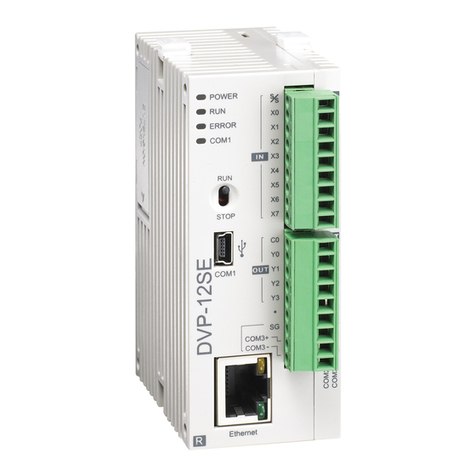
Delta
Delta DVP-PLC Instructions for use

Delta
Delta AS Series User manual
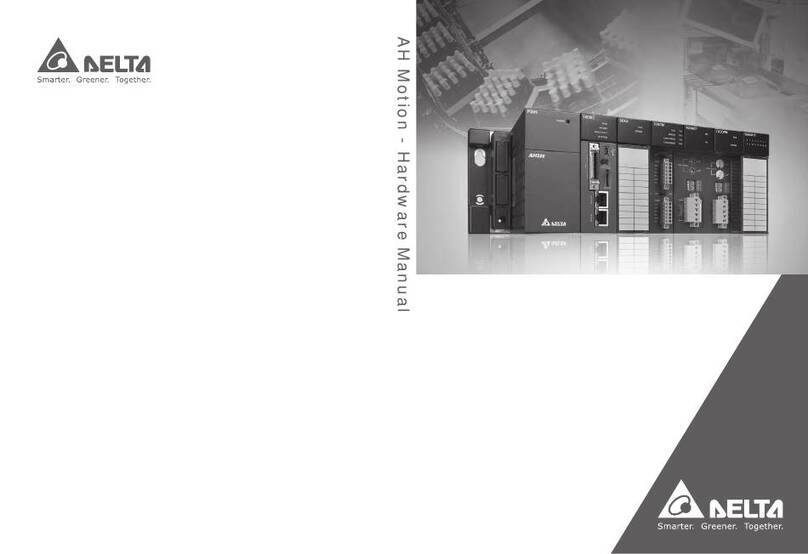
Delta
Delta AH Motion Series User manual
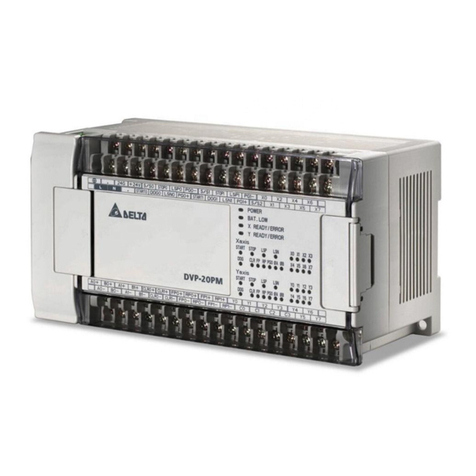
Delta
Delta DVP-20PM Instructions for use
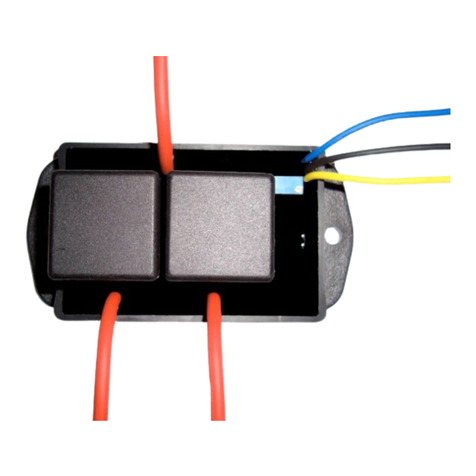
Delta
Delta 2SP2 User manual
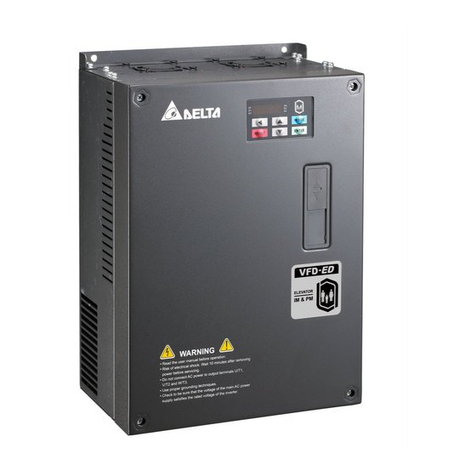
Delta
Delta VFD-ED Series User manual
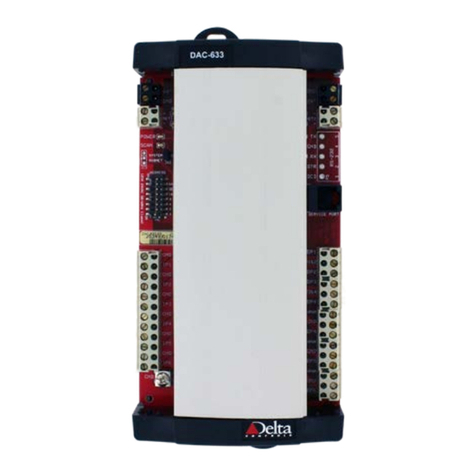
Delta
Delta DAC-633 User manual

Delta
Delta DVP-20PM User manual
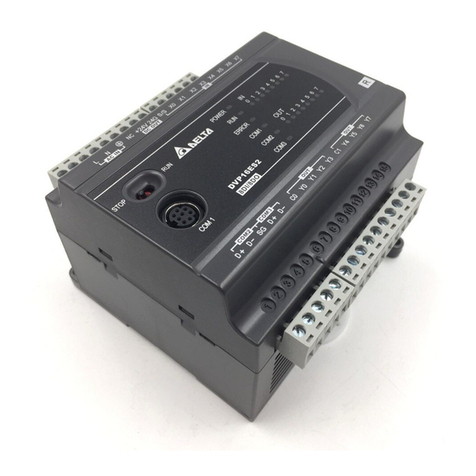
Delta
Delta DVP-ES2 User manual
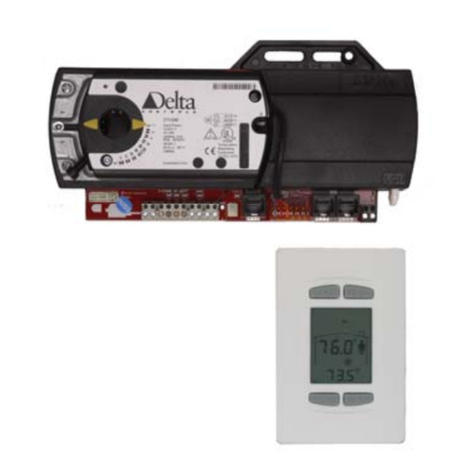
Delta
Delta DZNT-104T User manual
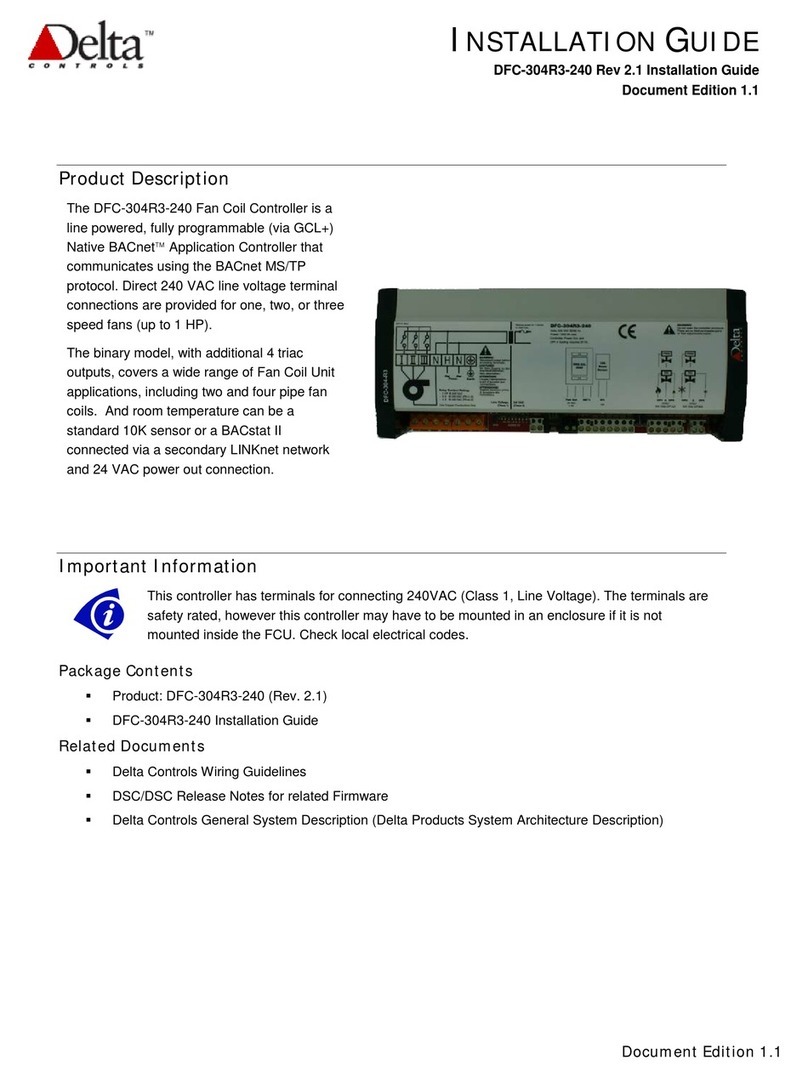
Delta
Delta DFC-304R3-240 User manual
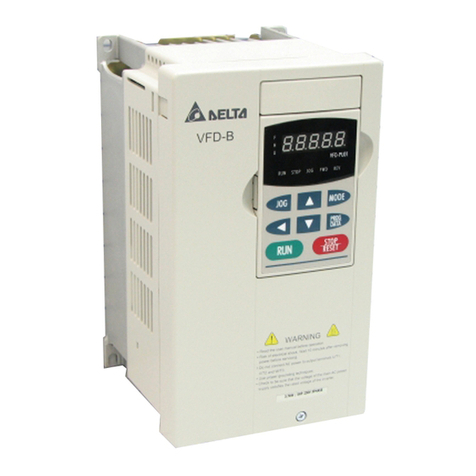
Delta
Delta VFD-B Series User manual
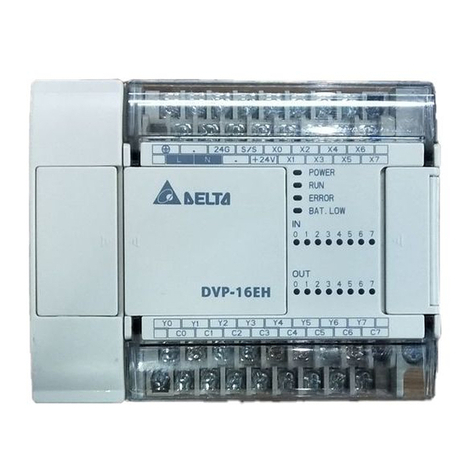
Delta
Delta DVP-EH2 Series User manual
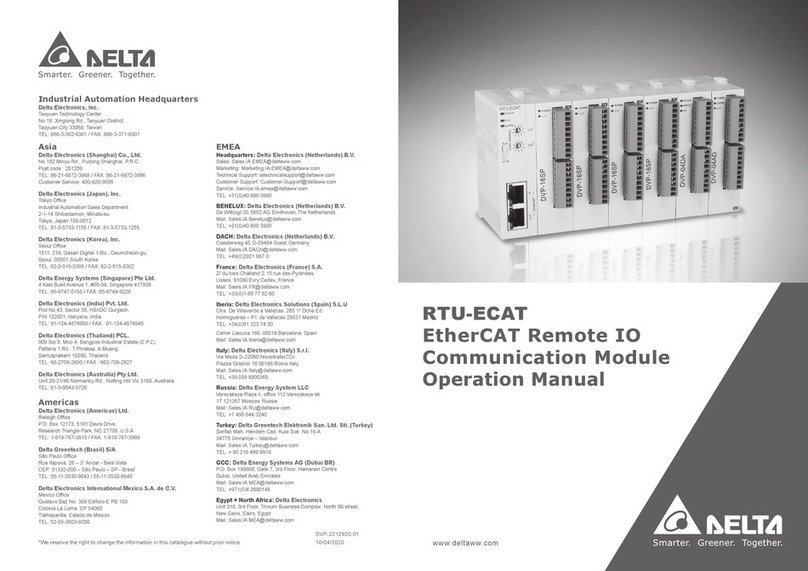
Delta
Delta RTU-ECAT User manual
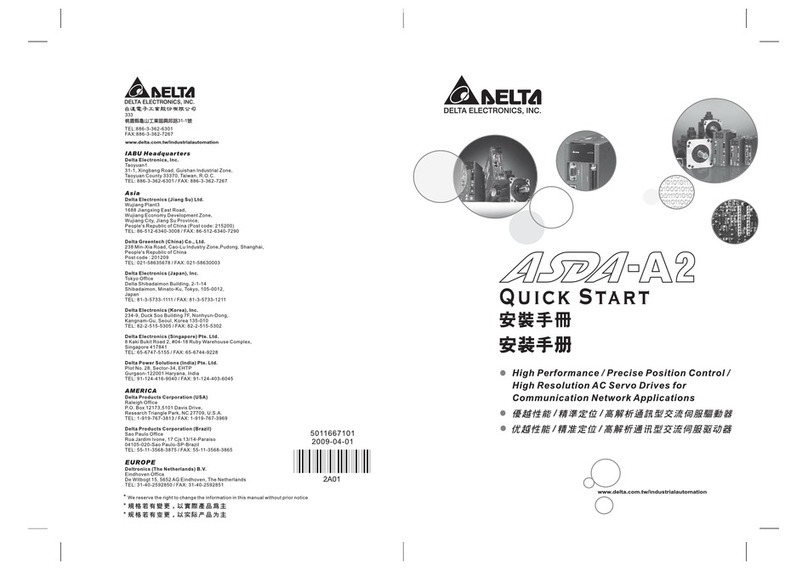
Delta
Delta ASDA-A2 Series User manual
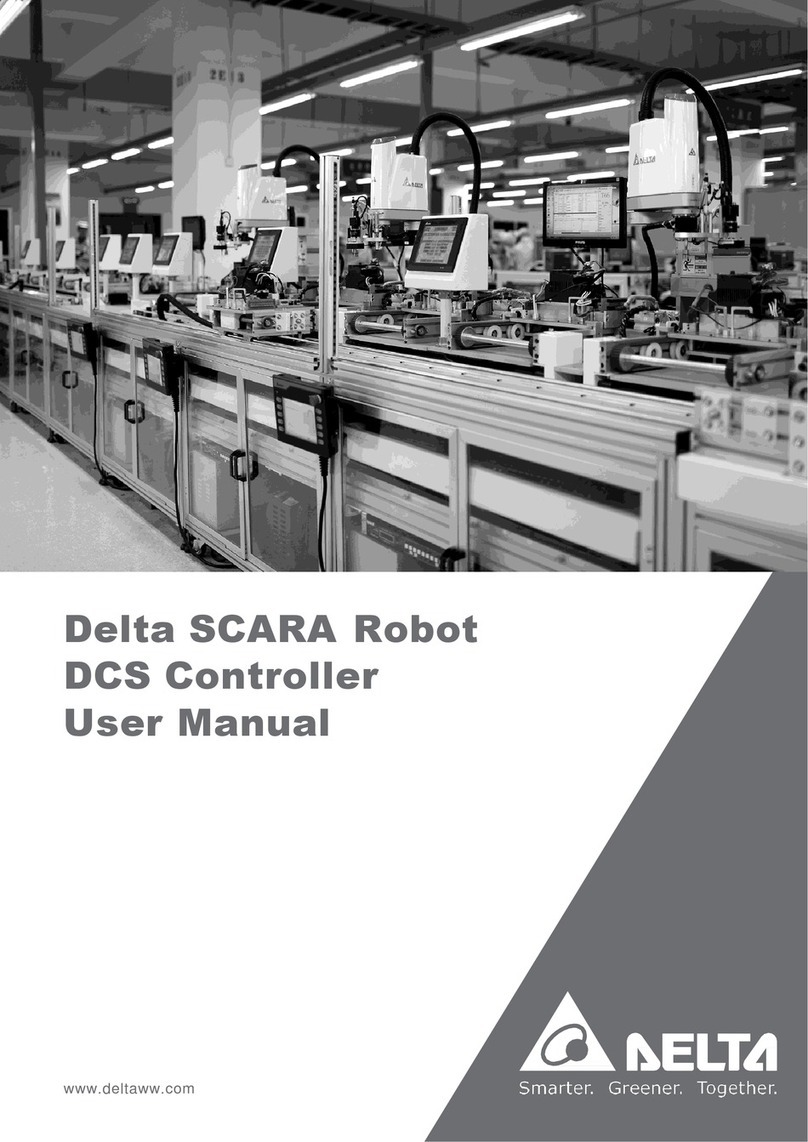
Delta
Delta DCS User manual
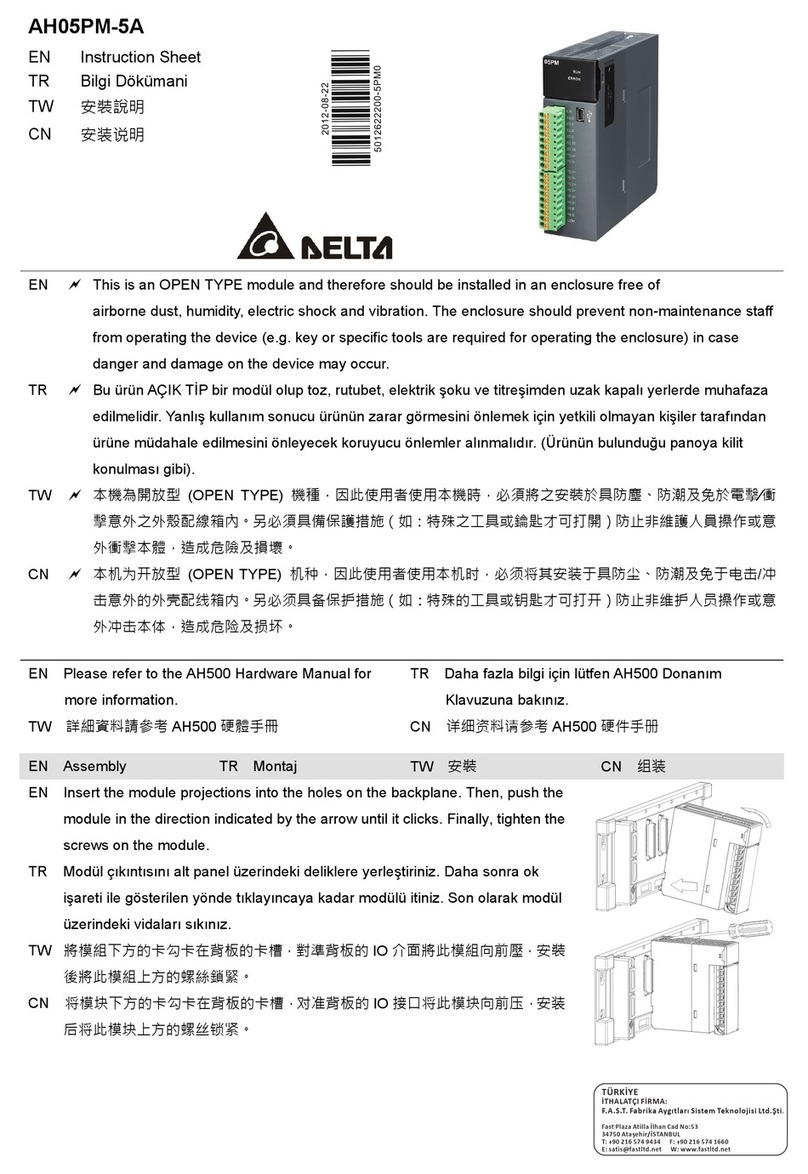
Delta
Delta AH05PM-5A User manual

Delta
Delta ASDA-A2 Series User manual
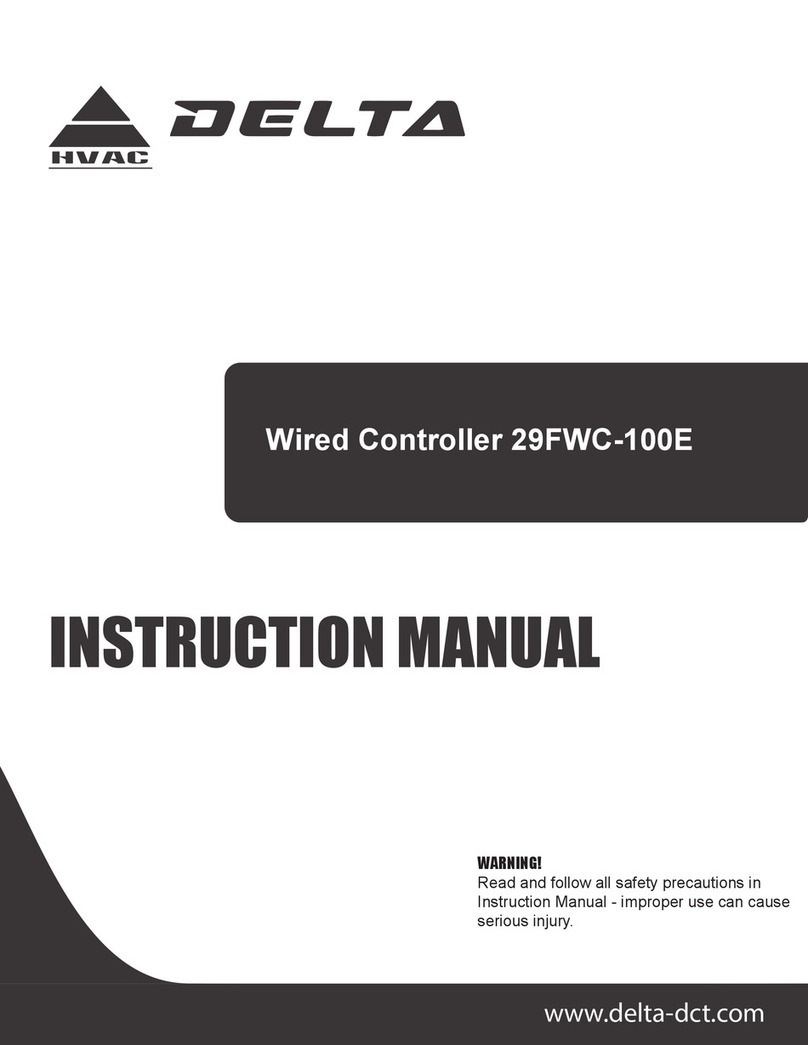
Delta
Delta 29FWC-100E User manual
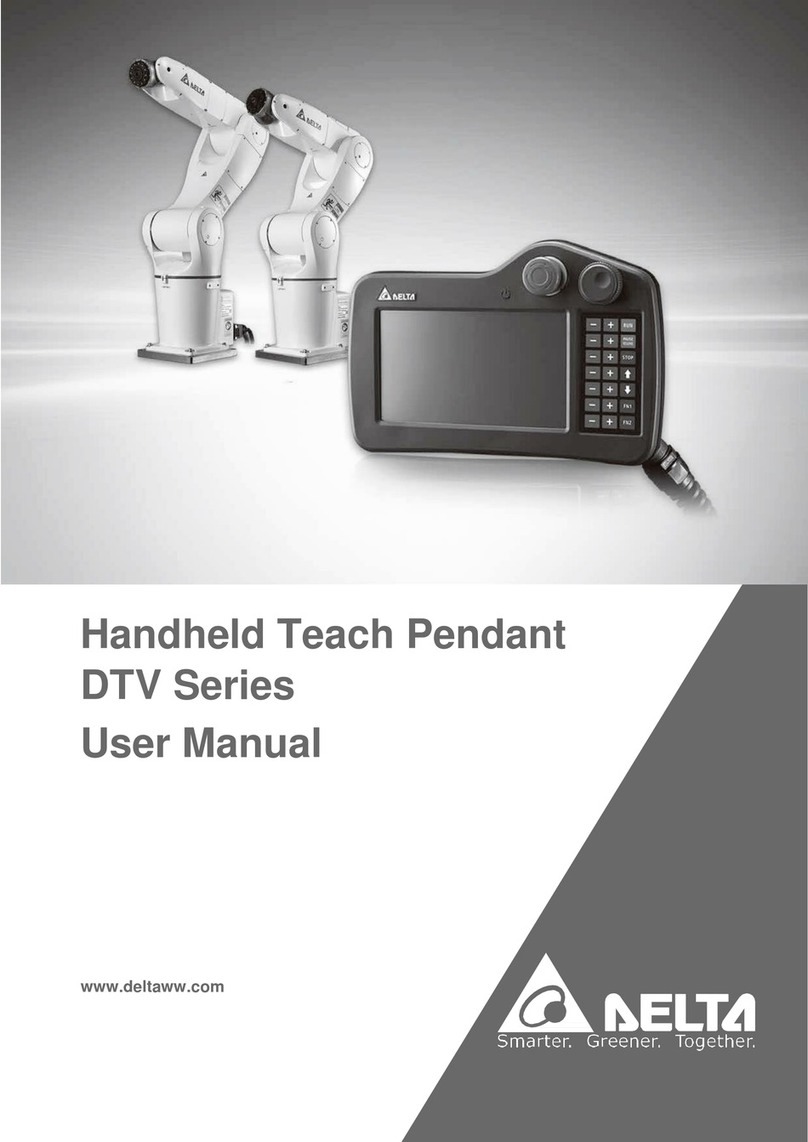
Delta
Delta DTV Series User manual
